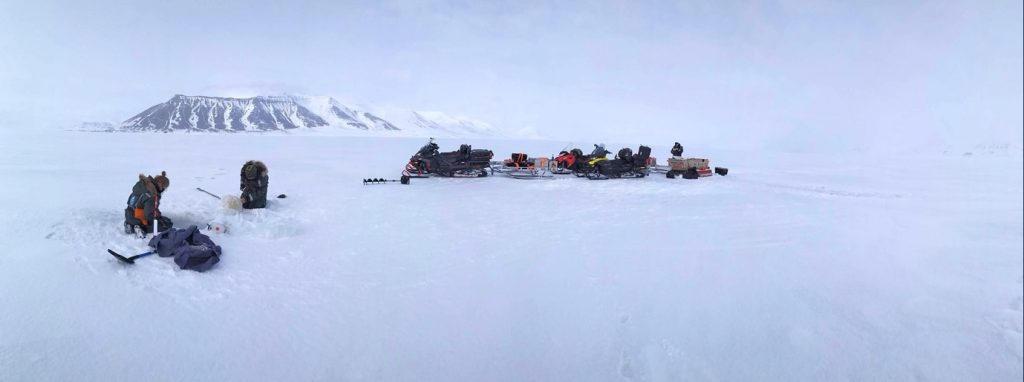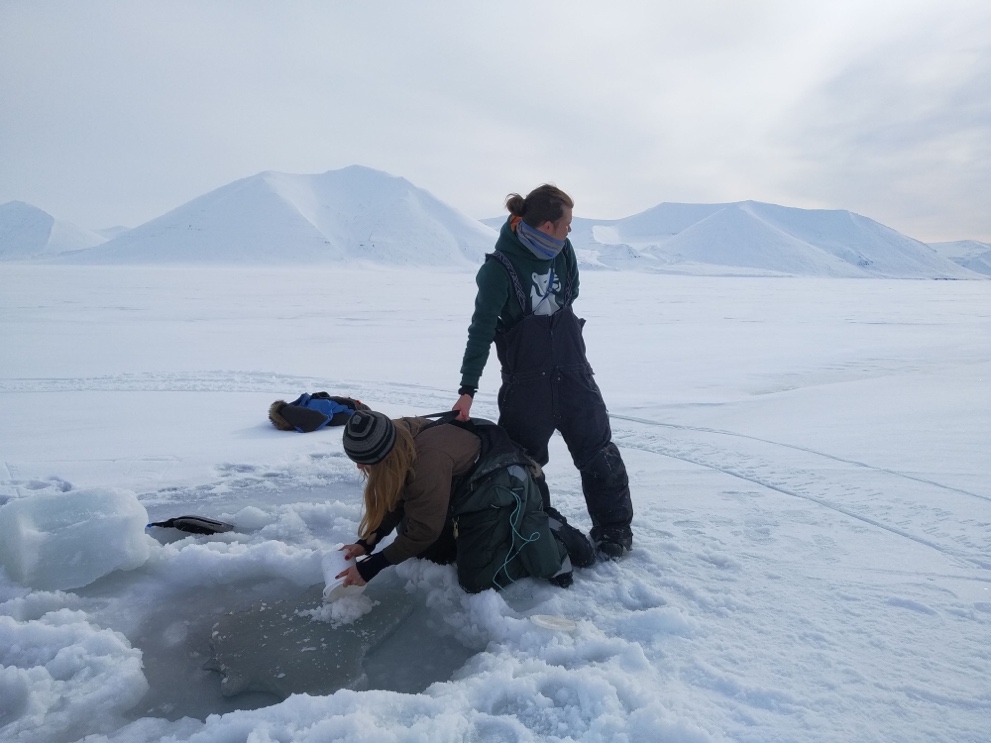So far, my internship consisted mostly of being in the laboratory analyzing samples, helping students, and organizing different sections of the biology department to work more efficiently. I had everything on my Wishlist ticked off, besides one; marine field work!
Initially my goal was to get on the AB.203 6-day marine biology cruise – the main reason most of my study mates decided on coming to UNIS and taking the AB-203 course. Unfortunately, there was not enough space for me to join due to corona regulations. I also felt a bit relieved because I tend to get seasick and don’t do well with smaller amounts of sleep (-the cruise was much harder work than the students anticipated).
Instead I got very lucky as I got offered to go on a 2-day field work trip instead with two PhD candidates, one specializing in zooplankton and the other in sea-ice algae. It even included an overnight stay at the Bjørnebo cabin near Svea! In total it was 5 of us, including another master student and my supervisor.

With snowscooters we drove to the incredibly beautiful van Mijenfjorden with sleds full of equipment and, of course, snacks. We drove onto the sea ice and took samples from several different locations. It was almost unbelievable to stand on the middle of what usually is a large open fjord, on top of almost a meter of incredibly stable sea ice. Another layer of excitement was added by the fresh polar bear tracks along the sides of the fjord. The weather was beautiful; no wind and sun most parts of the day.
The PhD candidates Vanessa and Rebecca were great patient teachers and showed me how to use all the equipment and take the different measurements. First, we actually had to drill through about a meter of ice; a task that is super exciting to newbies, and super exhausting once you have performed it over 50 times. Luckily this was done using an electric ice-augar so with a bit of help from your body weight a hole is made in just a few minutes. When a large hole was made, I was taught how to measure the light intensity below the sea ice versus above. This allows us to know how much light the critters beneath are receiving; a variable that can be important for the growth of the organisms. We then collected several water samples using a device that works like a trap for collecting water at a specific depth.
These samples are analyzed later in the lab by Vanessa to look for specific marine organisms. Next, we let a CTD device that records the conductivity (for salinity), temperature at the different depths that it travels through. This gives a great overview of the environment that the organisms are living in.

For the sea-ice I learned to take ice-cores; a cylindrical vertical sample of the entire ice at one spot, from which we then cut off the bottom 3 cm into bags for later analysis in the lab. The hope here is to collect the small ice algae that lives below the ice and often attaches itself to the bottom layer. On some locations we could even see a green/brown colouring from the layer of algae that had attached themselves to the ice, but our sea-ice algae expert was continually worried about the lack of abundance of these algae which she reasoned to likely be a consequence of the extensive winter that covers the ice with snow and prevents the organism’s access to the sun light they need to grow.




